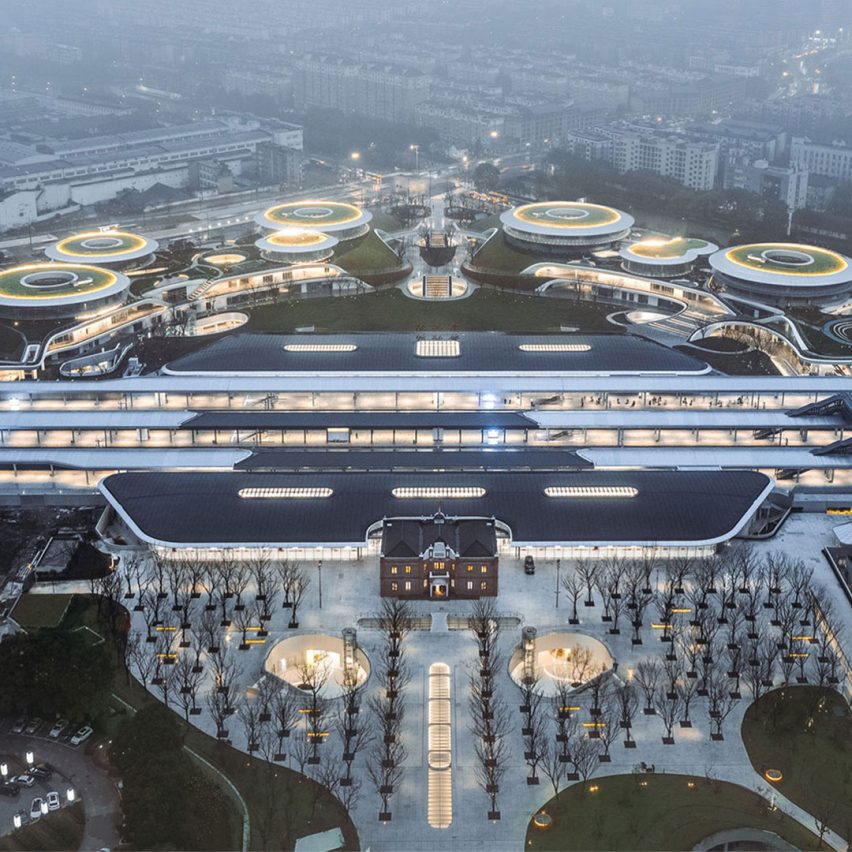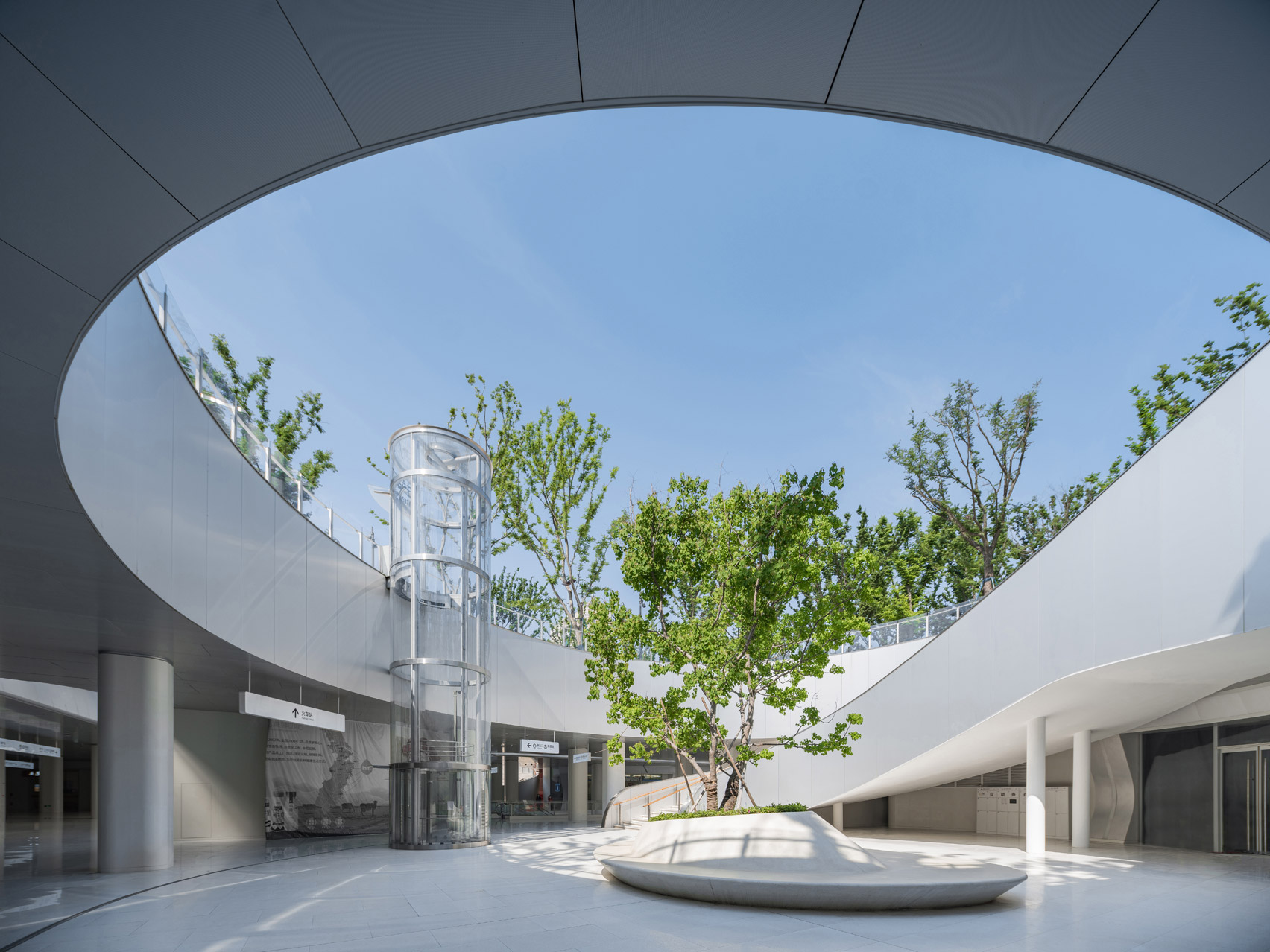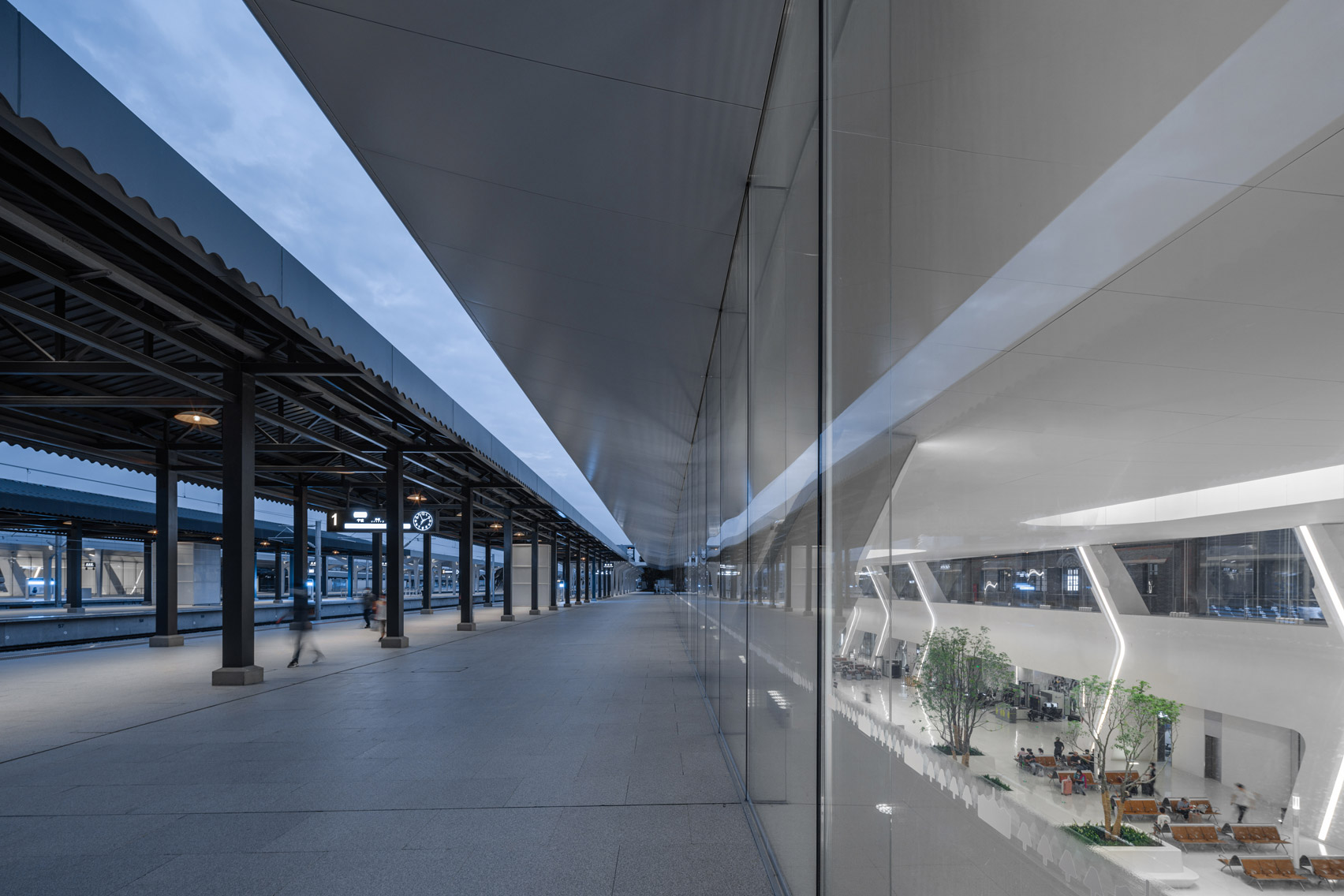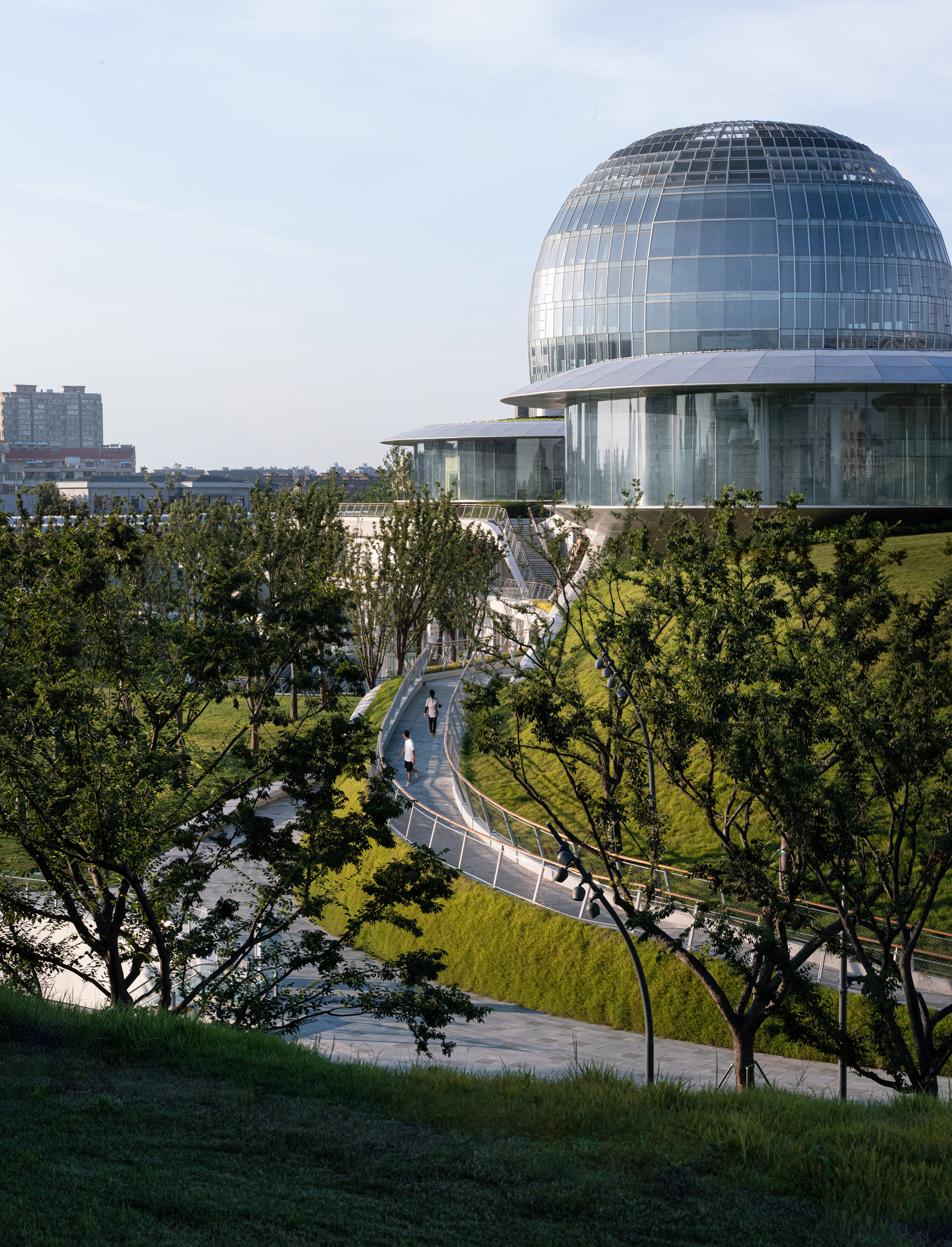
Architect Ma Yansong explains how his studio MAD combined historical and contemporary elements for its first train station in this talk, hosted by Dezeen for the Beijing architecture practice.
The one-on-one conversation between Yansong and Dezeen editor Tom Ravenscroft was held to celebrate the opening of the project, named Train Station in the Forest.
MAD’s first station design, the 354,000-square-metre building in Jiaxing, China, is centred around a full-scale replica of a historic station house built in 1907 but destroyed by bombing in 1937.
It marries contemporary elements with details copied from the original building.

The rebuilt structure forms the north entrance to the station, leading down into two sunken waiting halls. Glass facades and large skylights allow natural light to flood the space while providing travellers with a view of the structure’s historic elements.
During the discussion, Yansong explained how the combination of traditional and contemporary elements was essential to the design process.
“I wanted to make the whole experience more cultural, more contextual,” said Yansong.
“You have the two elements in a collage together, there’s a historical moment, and modern moment and they exist together,” he said.
According to Yansong, the design is also intended to be “about movement”.
“I wanted to make a station to remind people [of] the history, or the narratives, around this location,” Yansong explained. “And to continue this legacy and to create something more about the future,” he continued.
“When people come through this space they feel it’s more like a museum about time, they can understand the history, or the past, [or] the future of the city.”

In the talk, Yansong also said that he wanted Train Station in the Forest to challenge the existing model of transport hubs in China.
Showing examples of large-scale train stations in the country, he pointed out the limits of the monumental and formal typology often used in these spaces.
“They really become large scale, and really out of scale, sometimes,” he said.
“When you want to enter that building it’s very difficult because you need to bring your suitcase, [there’s] this big plaza and there’s a big scale building, sometimes it’s really difficult to find a way, or feel comfortable or efficient,” Yansong continued.

This led the studio to “make a small train station” for the country, Yansong said.
“Once the train station building becomes too monumental, that gives pressure to the passengers – they feel that this is more like palace or temple to pray,” he explained.
The transit spaces of the station are largely contained underground, freeing the ground level for public use. On the north side of the station, an existing public park has been extended to create an urban green space around the entrance.
On the southern side of the station is an above-ground commercial area, alongside landscaped lawns that can be used to host events and festivals.

Yansong explained how he wanted to create a space that fosters emotional experience and encourages wider community use.
“I want to bring freedom to the urban space,” said Yansong. “Providing space is one thing, but it’s not enough. I think for the public space, when people use it, they need to find out how they feel about themselves or the world,” he continued.
“If you compare an airport and an opera house, what’s the difference? They all have a single purpose – which is you go there to take a plane, or you go sit there for two hours to look at something, but you need to provide more, you need to provide the beauty,” he continued.
“I think they all need to share something. I think the openness, the community, the artistic sensibility to the emotion and the time, they’re all important for public space.”
Partnership content
This video was produced by Dezeen as part of a partnership with MAD Architects. Find out more about Dezeen partnership content here.
The post First train station by MAD designed to feel like a "museum about time" appeared first on Dezeen.
